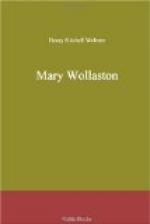He was somewhat flushed and a little out of breath but he seemed, after the first uncomfortable minute, collected enough. He mounted the running-board and directed the chauffeur to drive on across the bridge and fork to the right with the main road up to a small nondescript building on the far side of it.
It was a part of the farm, he explained, indicating the wilderness off to the left,—a part of what must once have been a big apple orchard. Indeed, exploring it yesterday for the first time, he had found a surprising number of old trees, which, choked as they were with undergrowth, looked as if they were still bearing fruit. The building, which they had never even entered until yesterday, had served as a sorting and packing house for the crop, though the old part of it—paradoxically the upper part—appeared to have been built as a dwelling by some pioneer settler. A second story had been added underneath by digging out the bank.
It stood well back from the road, a grass grown lane with a turning circle leading to it. It had what had once been a loading platform, wagon high, instead of a veranda. The lower story, a single room which they peered into through a crack in a warped unhinged door, seemed unpromising enough, a dark cobwebby place, cumbered with wooden chutes from the floor above by which, Graham explained, they rolled the apples down into barrels after they had been sorted up-stairs. A carpenter had been busy most of the morning, he added, flooring over the traps from which these chutes led down.
Mary, though, fairly cried out with delight, and even Miss Wollaston beamed appreciation when, Graham, having led them up the bank and around to the back of the building, ushered them in, at the ground level up here, to the upper story of the building. There was a fireplace in the north end of it with twin brick erections on either side which they thought must have been used for drying apples. The opposite end, partitioned off, still housed a cider mill and press, but they had contrived, he said, a makeshift bedroom out of it.
Along the east side of the room were three pairs of casement windows which commanded a view of the greater part of the farm; across the road, across Hickory Creek, across the long reach of the lower pasture and the seemingly limitless stretches of new plowed fields. The clump of farm buildings, old and new, was in the middle of the picture. Over to the left not quite a mile away, behind what looked like nothing more than a fold in the earth (the creek again, Graham explained. It swung an arc of two hundred degrees or so, about the main body of their tillable land) rose the heavily wooded slopes of Hickory Hill.
“We were surprised at this place,” he said, “when we opened it up yesterday. It’s the best view on the farm. It will be a fine place to build a real country house, some day, if we ever make money enough to do that.”
“It is a real country house already,” Mary told him briskly. “You two, living in a tent with a lovely old place like this just waiting for you! Wait until Aunt Lucile and I have had a day at it and you’ll see.”




